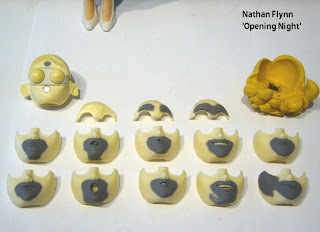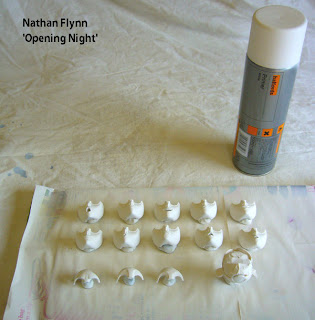This Little Old Lady is one of the side characters that 'Roy' runs into during the film. Above is the digitally painted Maquette showing the characters design.
I started by making this armature, using the maquette as a guide. The character doesn't need to walk or move around too much so its designed to be mostly static. The only movable parts are the arms and neck. The feet have M3 nuts inside them to help bolt the puppet to the set floor. The legs are made from steel wire and larger parts of the character are bulked out with balsa wood. The arms and neck slot into the K&S points located in the chest.
After sanding the balsa wood into shape I started to apply clay onto the surface. I used Super Sculpey Firm and Liquid Sculpey to help the clay adhere to the balsa. Above you can see the original plasticine maquette to the left and the sculpt in progress on the right.
Before sculpting the hair I baked the head. This gave me a solid surface to work on and meant I wouldn't accidentally squash the facial details while focusing on the hair. The arms are made from aluminium wire and 'Bake-n-Bend' Sculpey. This is a polymer clay that once baked in the oven becomes rubbery. This means the arms can be repositioned and animated to give a little wave.
The glasses and her bag were sculpted separately. Instead of sculpting the dress I will be adding material around the balsa wood. using real fabric helps to add more texture to the character, rather than all solid painted surfaces.
Above is the finished sculpture after being primed white ready for painting.
I painted the figure by hand using acrylic paints. Plastic lenses were added to the glasses and glued onto the characters head.
Having the character break apart into separate components makes painting the character a lot easier. The pattern on the dress has changed slightly from my original design. We found a pink polka dot material that I feel fits the 50's theme a lot better. The dress was glued into place with contact adhesive.
Finally I assembled all the pieces together and the character was complete, ready for filming.
Once I'd finished I realised the figure was able to balance on it's own without tie downs, so I took the pictures above.
We haven't given her a proper name yet. We just call her Little Old Lady. I'm open to any suggestions.
Thanks for reading.
























































